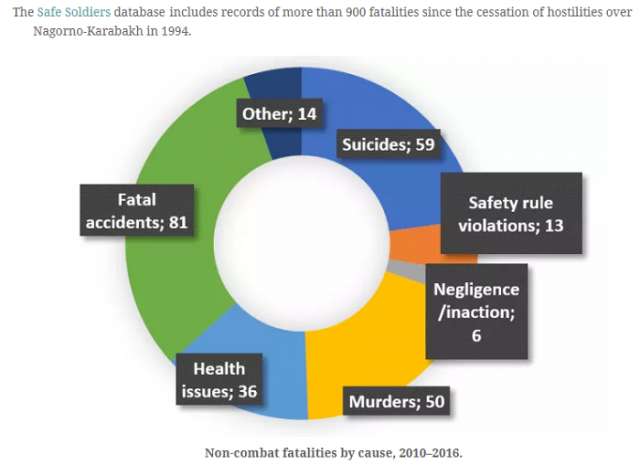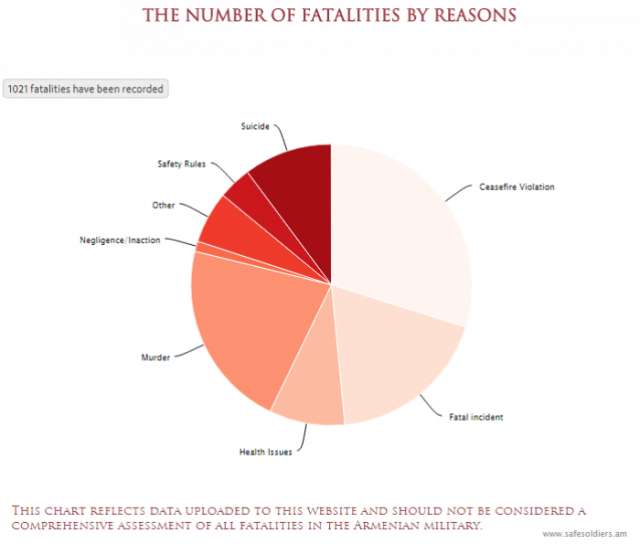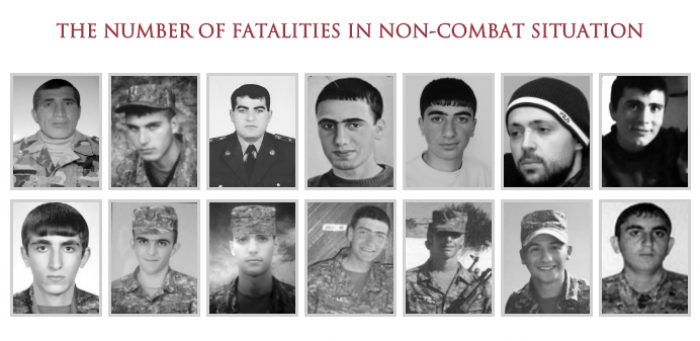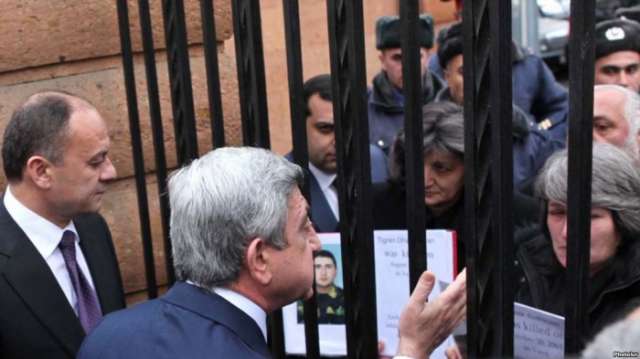The problems also include suspicious deaths in the military under noncombat conditions; bullying and mistreatment of conscripts by officers and fellow soldiers; allegations of abusive police behaviour during arrest and interrogation; and harsh and overcrowded prison conditions. Arbitrary arrests and lengthy pretrial detention with a lack of transparency for the reasons for detention, a distrust of the veracity of testimony, unclear criteria for release, and an uneven application of rights such as family visitation for detainees occurred.

As we mentioned, noncombat deaths in the military remains a problem in Armenia. On April 26, the Investigative Committee of Armenia reported the death of Private Hovhannes Petrosyan, whose body was found with two gunshot wounds to the head in the trunk of a military truck. Authorities initiated a criminal investigation into his death as an induced suicide. According to press interviews, Petrosyan’s family did not believe he committed suicide, claiming that his strained relations with an officer in his unit, whom Petrosyan reportedly prevented from stealing fuel from an official vehicle, led to his killing. As of November, no suspects had been arrested; the investigation continued at year’s end.
Human rights observers asserted that authorities presented sanitized versions of reported incidents of noncombat deaths in the military and focused their follow-up investigations on reinforcing the initial versions. The commissioner for human rights of the Council of Europe, Nils Muiznieks, once stated that he was “struck by the high level of distrust of the families of the victims and civil society in relation to such investigations.”

Reports of physical abuse and suicides in the Armenian army are not new. Such incidents are in part connected to a tradition of hazing, known as dedovshchina.The Armenian army, a pillar of the Armenian ruling establishment, always tries to escape heated general public criticism about physical abuse and non-combat deaths and usually hides the number of killed soldiers.

Although there are no reliable statistics on the extent of abuse in the military services, substandard living conditions, corruption, and commanders’ lack of accountability contributed to mistreatment and injury of soldiers by their peers or superiors.
According to human rights organizations, a subculture based on “a criminal value system” undermined military discipline and resulted in a concept of “manly behaviour” that overrode statutory rules. According to the Ministry of Defense, this subculture led soldiers to underreport criminal behaviour and abuse. While the military leadership claimed that they recognized the problem and sought to overcome it, some observers maintained that certain military commanders regarded it, as well as violence towards conscripts in general, as an effective way to maintain discipline.
Drawing on interviews with 38 former military personnel for its annual report, the Helsinki Committee found that military police subjected soldiers in their custody to physical and other abuse, included beating, kicking, punching, hitting with rubber truncheons, and humiliating treatment. Soldiers’ families claimed that corrupt officials controlled many military units, and there were media reports during the year that the government conscripted soldiers with serious health conditions that should have disqualified them.
Sabina Hasanova
More about: #Armenia
















































